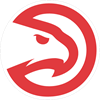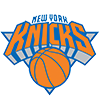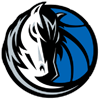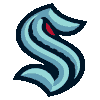Anthony Richardson, Jaylen Waddle, and Davante Adams
Head injuries in the NFL remain an issue as the league and its teams continue to look at various ways to reduce the risk of the injury occurring while also improving how concussions are identified and managed. When a player does sustain a head injury, it is often reported that Player X has been removed from the game and is "being evaluated for a possible concussion." Since multiple players faced this exact scenario in Week 2, let's look at what that actually means.
A concussion occurs when trauma to the head results in a disruption of normal brain function. This can include both physical and cognitive functions like balance, vision, hearing or memory. If a player gets hurts and loses consciousness, displays abnormal posturing (think Tua last season), speech dysfunction, balance issues, amnesia or general confusion he is automatically considered to have sustained a concussion and is ruled out for the remainder of the game. If he does not display any of the symptoms on the "No-Go" list but exhibits other symptoms like headache, dizziness, nausea, light sensitivity or vision issues, the player is removed from the game, his helmet is taken away to ensure he cannot return to the contest, and he must complete a sideline assessment in the medical tent or in the locker room.
The sideline evaluation includes a symptoms assessment, short-term memory recall, a review of the athlete's prior injury history, and a cranial nerve screening for
Anthony Richardson, Jaylen Waddle, and Davante Adams
Head injuries in the NFL remain an issue as the league and its teams continue to look at various ways to reduce the risk of the injury occurring while also improving how concussions are identified and managed. When a player does sustain a head injury, it is often reported that Player X has been removed from the game and is "being evaluated for a possible concussion." Since multiple players faced this exact scenario in Week 2, let's look at what that actually means.
A concussion occurs when trauma to the head results in a disruption of normal brain function. This can include both physical and cognitive functions like balance, vision, hearing or memory. If a player gets hurts and loses consciousness, displays abnormal posturing (think Tua last season), speech dysfunction, balance issues, amnesia or general confusion he is automatically considered to have sustained a concussion and is ruled out for the remainder of the game. If he does not display any of the symptoms on the "No-Go" list but exhibits other symptoms like headache, dizziness, nausea, light sensitivity or vision issues, the player is removed from the game, his helmet is taken away to ensure he cannot return to the contest, and he must complete a sideline assessment in the medical tent or in the locker room.
The sideline evaluation includes a symptoms assessment, short-term memory recall, a review of the athlete's prior injury history, and a cranial nerve screening for things like eye movement, gait, balance and speech. A full cervical spine exam is also conducted. If the sideline survey is completed and all involved parties feel the individual did not sustain a concussion, they can return to the game.
However, if the injured player continues to show symptoms or his condition worsens, he must then complete another, more comprehensive, concussion assessment called the "Locker Room Exam." The league has standardized this care to better analyze care and is combined with preseason baseline testing.
Once a player has been diagnosed with a concussion, they are placed into the league-mandated return to play protocol. The protocol is fluid and divided into graduating phases that progress from symptom-free at rest to full return to play. There is a high degree of variance among those who sustain concussions, so no set timeline is applied.
Richardson was the first to sustain the injury and self-reported his symptoms after hitting the ground during his second rushing touchdown. He has been placed into the concussion protocol and remains questionable for Week 3. He has time to complete the necessary steps, though it is important to remember that rarely happens in a linear fashion, and Richardson did sustain a concussion in 2021 as a member of the Florida Gators. Gardner Minshew will start if Richardson remains out.
Adams was unable to finish Sunday's loss to the Bills as completed the evaluation process, though he appears to have avoided a concussion. Coach Josh McDaniels said his receiver was "good," and all signs point to him playing against the Steelers in Week 3. Still, Adams has a history of concussions, and those invested here will want to keep an eye on his availability in this week's practices to ensure his symptoms do not return with physical activity.
Waddle's injury occurred late Sunday night and, like Richardson, he has been placed in the concussion protocol. Coach Mike McDaniel stated Waddle is already "progressing" through the necessary steps to return. Consider him day-to-day for now. with a return in Week 3 possible if he is able to return to the practice field by the end of the week.
Turf Burns
Saquon Barkley: The Giants running back suffered an ankle sprain Sunday and, while it is not a dreaded high-ankle sprain, he is expected to miss at least three weeks. A "normal" ankle sprain involves the lateral aspect of the ankle and the stabilizing ligaments located there. Barkley will spend the early phases of treatment working on the associated symptoms and the range of motion in his ankle before advancing to strengthening and sport-specific movements. He could return ahead of schedule, but New York currently considers him "week-to-week." Matt Breida will now become the feature back for the Giants.
Odell Beckham: The former Giants receiver also suffered an ankle injury in Week 2 though the Ravens have downplayed the severity of the ailment. Beckham is not expected to miss time but may be limited in practices to begin the week.
Joe Burrow: The Bengals quarterback aggravated his previous calf strain and could miss additional time. He was still sore on Monday following the team's loss to the Ravens and the team is uncertain about his availability for Week 3. Lower extremity strains are easily re-injured or aggravated with the secondary injury often resulting in missed time. I wouldn't be surprised if Burrow misses this week. Even worse, his status could be difficult to navigate as Cincinnati doesn't play until Monday Night Football.
Nick Chubb: The Browns running back suffered a gruesome knee injury Monday night. The team has confirmed he will be lost for the season as the injury involved significant ligament damage. He was taken to a nearby hospital for observation though he was allowed to return to the team. These steps are often taken when a true knee dislocation has occurred. This approach is not uncommon with an injury of the magnitude. The mechanism of injury resulting in this type of damage can impact nerves and blood vessels in the area. Fortunately, he appears to have avoided any of these complications. He has a long road of recovery ahead of him and sadly it's one he has navigated before. Chubb tore the MCL, PCL and LCL in this same knee back in 2015 while at Georgia. Jerome Ford will take over in the Browns backfield. Ford finished Monday night's loss with 19 touches for 131 yards from scrimmage and one touchdown.
Amari Cooper: Cooper managed to suit up for Monday's loss to the Steelers despite aggravating a groin injury in the days leading up to the matchup. Cooper underwent offseason surgery on his core and there were reports suggesting the aggravation involved scar tissue. Cooper finished with seven receptions for 90 yards.
Brandin Cooks: The Cowboys won their home opener with Cooks in street clothes after the veteran suffered a mild knee sprain in Week 1. Cook suffered a low-grade sprain of his medial collateral ligament (MCL) against the Giants but is on track to return in Week 3. Cooks should return to his role as Dallas' No. 2 receiver after Michael Gallup and Jalen Tolbert failed to capitalize on his absence. The two finished the win over the Jets with four receptions and 21 receiving yards combined.
Aaron Jones and Christian Watson: Two of Green Bay's top offensive weapons did not suit up on Sunday due to hamstring strains. Both will attempt to return to practice in the week ahead, but, like we discussed with Burrow and have seen with Cooper Kupp, leg strains are often tricky to manage. Both players will be at an increased risk for reinjury when they do return, especially in the first two weeks back from injury. Watson has yet to play this season, while Jones sustained his injury in Week 1. Tread cautiously here and consider all your options, even if they are cleared to return to action.
DK Metcalf: Metcalf missed a portion of Sunday's contest after sustaining a rib injury. He was able to return after being evaluated but was reportedly still sore on Monday. Rib injuries often come down to pain management, though that can be complicated as the associated pain is generally high. Simple motions like breathing can exacerbate the symptoms, and direct contact can be particularly painful. It sounds like the Seahawks will give him a few days off to rest and recuperate in hopes of having him on the field for Week 3. He could don a flak jacket to protect the area, but those can be bulky and limit performance. Expect him to take the field with some sort of padding on the area regardless.
David Montgomery: The Lions lead running back suffered a thigh contusion against the Seahawks. On Monday, coach Dan Campbell said the team is considering him day-to-day despite Montgomery indicating Sunday that the problem would need "a couple weeks" to heal. It is possible both parties are correct, as Montgomery could suit up and play while the injury continues to heal. While a thigh contusion doesn't sound like a serious ailment, the injury can be very functionally limiting and, like Montgomery insinuated, slow to heal. Even if he does play, the Lions could opt to manage his workload, giving rookie Jahmyr Gibbs additional carries. Those invested in Montgomery should scale back their expectations for the next week or two.








































